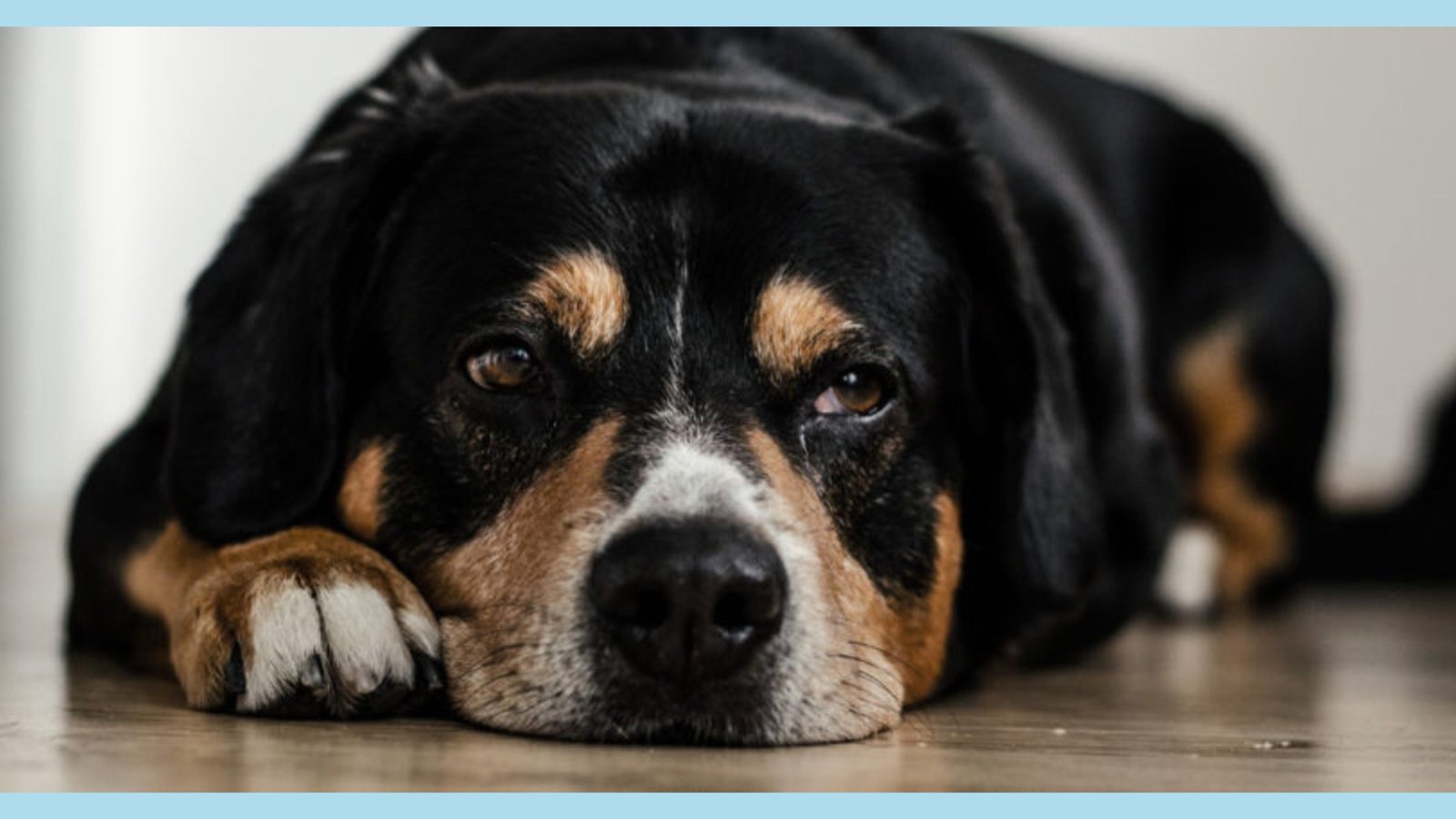The profound connection between humans and dogs often leads us to ponder the mysteries of their behavior, especially when they are left to their own devices. One intriguing behavior that has captured the curiosity of dog owners worldwide is the tendency for dogs to stare into the distance when they are alone. let’s EXPLORE WHY DOGS STARE AT NOTHING?

UNDERSTANDING THE DOG MIND
In this exploration, we delve deep into the dog mind to uncover the enigma of why dogs exhibit this behavior, examining the possible reasons, underlying instincts, and how pet owners can understand and address their dogs’ solitude-induced gaze.
Dog’s Natural Instincts and Survival Mechanisms
Dogs, descendants of wolves, retain many natural instincts and survival mechanisms. Staring into the distance can be linked to their ancestral instincts, where heightened awareness of the environment was crucial for survival. Understanding this connection provides insights into why dogs exhibit this behavior, especially when left alone. Recognizing the link to ancestral behaviors helps pet owners comprehend the purpose behind dogs’ actions.
Dog’s Sensory Perception and Alertness
Dogs have an exceptional sensory perception that surpasses human capabilities. Their acute sense of smell, hearing, and vision enables them to detect subtle changes in their surroundings. When alone, dogs may stare into the distance as a way of enhancing their alertness, picking up on scents, sounds, and visual stimuli that might escape our notice. Acknowledging the sensory aspect of their behavior sheds light on the depth of dogs’ awareness.

REASONS WHY DOGS STARE AT NOTHING INTO THE DISTANCE
Boredom and Lack of Stimulation in Dogs
Dogs are intelligent and social animals that thrive on mental and physical stimulation. When left alone for extended periods without adequate enrichment, dogs may resort to staring into the distance as a manifestation of boredom. This behavior can be a signal that they crave mental engagement and activities. Recognizing signs of boredom prompts pet owners to implement strategies for a more engaging environment.
Separation Anxiety in Dogs
Dogs, known for their strong bond with their human companions, may experience separation anxiety when left alone. Staring into the distance can be a manifestation of their distress, as they anxiously await the return of their owner. Understanding separation anxiety is crucial for addressing this common issue. Identifying separation anxiety helps pet owners implement strategies to ease their dogs’ stress during solitude.
Observation and Guarding Instincts in Dogs
Dogs inherently possess a keen observation and guarding instinct. When alone, especially in unfamiliar environments, dogs may stare into the distance as a way of monitoring their surroundings. This behavior is rooted in their natural inclination to assess potential threats and maintain vigilance. Recognizing their observation and guarding instincts allows pet owners to create secure environments for their dogs.

ADDRESSING DOG SOLITUDE-INDUCED STARING
Providing Mental and Physical Enrichment for Dogs
Combatting boredom and lack of stimulation is essential for preventing solitude-induced staring. Engage your dog’s mind with interactive toys, puzzle feeders, and varied activities.
Physical exercise, such as daily walks and play sessions, contributes to a well-balanced and stimulated canine companion. Prioritizing mental and physical well-being addresses the root cause of solitude-induced staring.
Creating a Comfortable Environment for Dogs
For dogs experiencing separation anxiety, creating a comfortable and secure environment is crucial. Provide familiar items, such as their bed, toys, or clothing with your scent, to offer reassurance during your absence. Gradual desensitization to departures and arrivals can help alleviate anxiety. Establishing a comforting environment minimizes stress and reinforces a positive association with alone time.
Seeking Professional Guidance for Dogs
In cases where solitude-induced staring is accompanied by signs of distress or behavioral issues, seeking professional guidance is recommended. A veterinarian or a certified animal behaviorist can assess your dog’s specific situation, provide tailored advice, and recommend interventions to address underlying concerns. Expert assistance ensures a comprehensive approach to addressing behavioral challenges. The phenomenon of dogs staring into the distance when they are alone is a multifaceted aspect of dog behavior, influenced by their instincts, sensory perception, and emotional dog well-being.
By understanding the potential reasons behind this behavior and implementing proactive strategies, pet owners can enhance their dogs’ overall happiness and comfort during periods of solitude. Observing and interpreting your dog’s actions with empathy and a keen awareness of their individual needs fosters a stronger bond and a more fulfilling companionship. As we unravel the mysteries of dog behavior, we deepen our connection with these remarkable beings, celebrating their uniqueness and enriching their lives in return.

EXPLORING ANCESTRAL BEHAVIORS IN DOGS
Dogs, our loyal companions, have a rich and storied history deeply intertwined with their wild ancestors. Understanding the ancestral behaviors in dogs not only provides fascinating insights into their natural instincts but also offers a foundation for better comprehending and enhancing our relationships with these remarkable creatures. Let’s delve into the ancestral behaviors that shape dog instincts, examining their significance in contemporary settings and how pet owners can nurture and respect these ingrained traits.
The Evolutionary Journey of Dogs
- Dog Domestication Timeline: The journey of dogs from wild wolves to domesticated companions spans thousands of years. Exploring the timeline of dog domestication unveils key milestones and the gradual development of behaviors that distinguish domestic dogs from their wild ancestors. Tracing the history of dog domestication provides context for understanding contemporary dog behaviors.
- Genetic Influences on Behavior: Genetic factors play a crucial role in shaping the behaviors of domestic dogs. Examining the genetic influences on temperament, sociability, and other traits provides valuable insights into the inherent qualities that dogs inherit from their ancestors. Recognizing the genetic foundation of behaviors helps pet owners tailor care and training to their dogs’ predispositions.
Unraveling Ancestral Behaviors in Dogs
- Pack Dynamics and Social Structure: Wolves, as the closest relatives of domestic dogs, exhibit intricate pack dynamics and social structures. Exploring how ancestral wolves cooperated within packs sheds light on the social nature of dogs and the importance of socialization for their well-being. Understanding pack dynamics guides pet owners in fostering healthy social interactions among dogs and with humans.
- Territorial Instincts and Marking Behavior: Ancestral wolves were territorial animals with well-defined territories. Dogs, too, exhibit territorial instincts and marking behaviors. Examining how marking serves communication purposes provides insights into why dogs engage in scent-marking behaviors. Recognizing the significance of marking behavior allows pet owners to interpret their dogs’ communication cues.
- Hunting and Foraging Instincts: The ancestral behavior of hunting and foraging remains ingrained in dogs. Exploring how wolves hunted in packs and foraged for food informs our understanding of why dogs engage in activities like scavenging or exploring outdoor environments. Nurturing hunting instincts through interactive play and mental stimulation supports dogs’ well-being.
- Communication through Body Language: Wolves and dogs communicate extensively through body language. Analyzing the subtle cues of body language, such as tail position, ear movement, and facial expressions, provides a window into the intricate ways dogs convey their emotions and intentions. Developing an awareness of body language enhances communication and strengthens the human-canine bond.

ANCESTRAL DOG BEHAVIORS IN MODERN LIVING
Dog’s Instinctual Responses to Fear and Stress
Ancestral behaviors influence how dogs respond to fear and stress. Examining flight or fight responses and understanding how dogs process fear provides valuable insights for creating environments that minimize stressors and promote well-being. Implementing stress-reduction strategies aligns with dogs’ natural instincts and promotes a sense of security.
Dog’s Reproduction and Mating Behaviors
Ancestral wolves had distinct mating behaviors and reproductive strategies. Exploring how dogs express reproductive behaviors provides insights into the importance of spaying and neutering, managing breeding-related behaviors, and promoting responsible pet ownership. Acknowledging reproductive instincts guides pet owners in making informed decisions about their dogs’ well-being.
Nurturing and Respecting Ancestral Behaviors
- Dog Enrichment Activities: Recognizing ancestral behaviors underscores the importance of providing enrichment activities that cater to dogs’ natural instincts. Interactive toys, puzzle feeders, and outdoor adventures contribute to mental and physical stimulation, aligning with their evolutionary needs. Prioritizing enrichment activities enhances dogs’ overall satisfaction and prevents behavioral issues.
- Positive Training Approaches: Positive training approaches align with ancestral behaviors by acknowledging the importance of communication and cooperation. Utilizing positive reinforcement techniques fosters a collaborative relationship between pet owners and their dogs, promoting mutual understanding and trust. Embracing positive dog training methods builds a strong bond and encourages desired behaviors.
Brief sum up on why dogs stare at nothing
Unveiling ancestral behaviors in dogs offers a profound appreciation for the intricate tapestry of their evolutionary journey. Recognizing the influence of their wild ancestors on contemporary behaviors empowers pet owners to create environments that honor and nurture these instincts. By understanding pack dynamics, territorial instincts, hunting behaviors, and more, we can forge stronger bonds with our dogs, ensuring their well-being and happiness in the modern world. As we celebrate the unique qualities that make each dog an individual, let us embrace the richness of their ancestry and continue to evolve our understanding of these extraordinary beings who have shared our lives for countless generations.
Another question asked about dog’s gaze is, Why my dog Stare at me? <- Read more about it!



